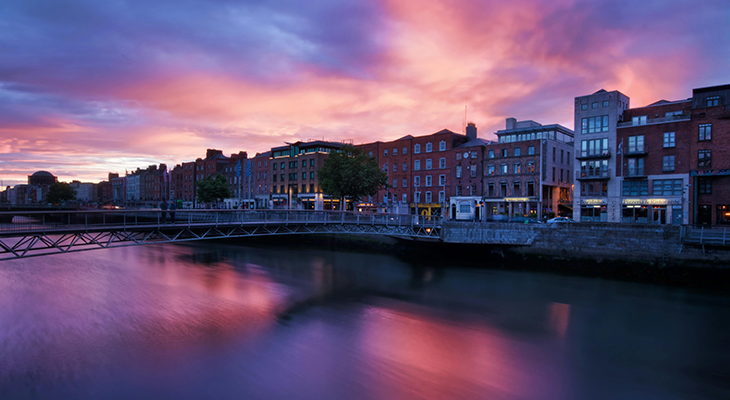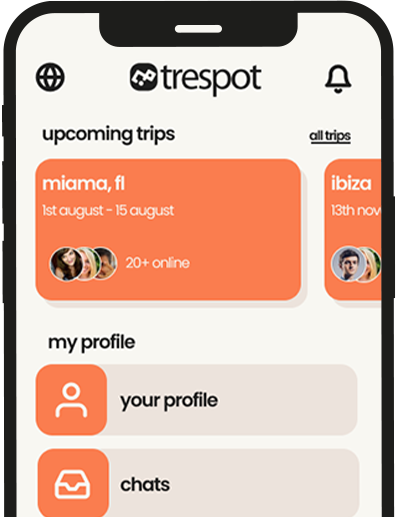What top‑ranking pages say (quick synthesis)
A cross‑read of top resources on “best time to visit Dublin” shows strong consensus: Lonely Planet splits the year into high/shoulder/low; U.S. News Travel leans toward June–August for warmth/festivals; the official tourism board Visit Dublin says there’s no bad time but notes May–September as lively; Condé Nast Traveler favors May, June, September; Rick Steves highlights very long summer daylight; local guides like The Irish Road Trip champion spring/autumn shoulder months; and the Guinness Storehouse suggests May–June & Sep–Oct for fewer queues. Common ground: Summer = longest days + festivals + crowds/prices; late spring/early autumn = best balance; winter = value + short days.
Introduction
If you’re wondering about the best time to visit Dublin, you’re not alone. With famously changeable weather and a calendar packed with events—from the emerald‑green spectacle of St. Patrick’s Festival in March to Bloomsday in June—timing your trip can feel like a puzzle. Most travel editors agree that late spring and early autumn balance pleasant conditions with lighter crowds, while summer delivers the longest days and most festivals (plus the highest prices).
This guide blends official climate data (30‑year averages), daylight tables, and authoritative travel advice to help you choose your sweet spot—whether you’re a budget‑savvy backpacker, culture‑first traveler, or a night‑owl planning pub‑to‑pub meetups. Expect concrete numbers for temperature, rain, and daylight; a festival calendar you can trust; and practical tips on what actually changes month to month. With the right expectations, Dublin is rewarding in every season—and this article will help you decide the best time to visit Dublin for your priorities.
The quick answer & how to choose
If you want maximum daylight and festivals, visit June–August. You’ll get warmest temps (for Ireland), buzzy streets, and late‑light vibes—but also peak prices, queues at blockbusters like the Guinness Storehouse, and limited last‑minute availability.
If you want a best‑of‑both‑worlds balance, target late April–May and September–October. These shoulder months are widely recommended thanks to manageable crowds, fairer rates, and still‑pleasant conditions.
If you want maximum value and cozy pub culture, look at November–February (avoid the Christmas/New Year spikes). Expect short days and chilly, damp conditions, but some great museum time, live music, and deal‑friendly lodging.
Weather & daylight by season (what actually changes)
Temperatures & rain (official 30‑year normal)
Dublin’s maritime climate is mild. Based on long‑term averages (e.g., Dublin Airport 1981–2010), mean highs typically range from ~8 °C in January to ~19–20 °C in July/August; mean lows from ~2–3 °C in winter to ~11–12 °C in summer. Rain is fairly evenly spread year‑round. Pack a light waterproof and layers. For formal climate tables, see Met Éireann.
Daylight swing
Daylight is a major differentiator: around the June solstice, sunrise can be near ~05:00 and sunset near ~22:00; in December, expect roughly 7.5–8 hours of light. Explore sunrise/sunset calendars at Timeanddate (Dublin).
Sunshine tendency
May–June are typically among Ireland’s sunniest months, a pattern Dublin often benefits from. Sunshine stats and monthly summaries are available at Met Éireann – Climate Statements.
Takeaway: Weather seldom stops play in Dublin; daylight is the bigger differentiator.
Month‑by‑month guide (Jan–Dec)
Winter (Nov–Feb)
Why go: Value travelers will appreciate lower rates, fewer tour groups, and intimate pub sessions. Museums and indoor highlights shine. Conditions: Mean highs near 8 °C (Jan/Feb), lows around 2–3 °C; short days, damp air; snow is rare but rain and wind are common. Notes: December has festive markets and lights (prices spike near Christmas/New Year). February can feel especially gloomy light‑wise, but also quiet and affordable.
Spring (Mar–May)
Why go: Blossoming parks, rising temps, and festivals like St. Patrick’s in March; late April–May is a favorite for balance. Conditions: Mean temps rise from ~7 °C in March to ~11 °C in May. May and June tend to be among the sunniest months. Notes: St. Patrick’s week is very busy; book early if aiming for March 17.
Summer (Jun–Aug)
Why go: Longest days, city outdoors in full swing, many events; perfect for evening walks on the Liffey, coastal trips to Howth, and late‑light meetups. Conditions: Mean highs ~17–20 °C; evenings are cool; showers possible—this is still Ireland. Notes: Peak crowds and prices; reserve top attractions and restaurants.
Autumn (Sep–Oct)
Why go: Leaves change in city parks; Dublin Theatre Festival energizes the arts scene. Conditions: Mean temps ~13–10 °C from September to October; daylight shortens but remains practical. Notes: A classic shoulder‑season pick for many pros.
Festivals & events calendar you’ll care about
- March – St. Patrick’s Festival (around Mar 17): Parades, music, art, city‑wide buzz. Plan far ahead—rooms vanish early. Official site
- June – Bloomsday (June 16 & festival dates around it): James Joyce fans retrace Ulysses; the city’s storytelling spirit peaks. Official site
- Late Sep–mid Oct – Dublin Theatre Festival: Premieres, international work, talks. Official site
- Late Oct–early Nov – Bram Stoker Festival: Gothic arts & Halloween‑flavored experiences. Official site
Crowds, prices & availability (what the guides say)
Peak mechanics: June–August brings the longest days and most festivals—and also the busiest queues and priciest stays. Book transport, hotels, and marquee sights well in advance if you’re set on midsummer.
Shoulder value: Late Apr–May and Sep–Oct are consensus sweet spots: lighter crowds, better chances of restaurant seats and attraction slots, and rates that aren’t at summer highs.
Cheapest months to fly: November frequently offers the most affordable fares into Ireland, with December among the most expensive due to holidays.
What to do by season (and why timing matters)
Spring (Mar–May)
Public gardens (St. Stephen’s Green, Iveagh Gardens) start blooming; St. Patrick’s week is ultimate people‑watching; lines are long but not summer‑long. Day trips to Howth for cliff walks feel brisk but bright, especially in May when sunshine stats improve.
Summer (Jun–Aug)
Late light lets you stack activities—Trinity/Book of Kells in the morning, Guinness Storehouse late afternoon, dinner and music without worrying about darkness. Coastal micro‑adventures (Dollymount Strand, Howth Head) flourish with long days.
Autumn (Sep–Oct)
Culture fans time trips for the Dublin Theatre Festival; parks turn golden; temperatures remain very walkable. This is a great window for travel meetups—venues are lively but not slammed.
Winter (Nov–Feb)
Think immersive museums (EPIC, Chester Beatty), pub sessions, and food tours. Budget travelers find value, but plan around short days (optimize indoor bookings earlier).
Traveler profiles: pick your best time to visit Dublin
Budget seekers & backpackers
Aim for Nov–Feb (avoid Christmas–New Year premium). Consider late Oct or early Mar for a little more daylight with similar savings. If flexible, November can mean cheaper flights.
Culture lovers & festival‑goers
Your calendar is your compass: St. Patrick’s (mid‑March), Bloomsday (mid‑June), Theatre Festival (late Sep–mid Oct), Bram Stoker (late Oct/early Nov).
Nightlife crews & meetups
Summer for street energy and outdoor shows; shoulder months for a social scene without shoulder‑to‑shoulder squeeze. Guinness Storehouse calls May–Jun/Sep–Oct great shoulder windows.
Photographers & walkers
Late Apr–May for clean spring light and longer days; Sep–Oct for soft autumn hues; remember that June gives marathon daylight for golden/blue hours.
Packing & practical tips for Dublin’s “four seasons in a day”
- Layers + light waterproof are non‑negotiable year‑round. Shoes that handle rain and cobblestones help.
- Book ahead in summer for headline attractions and restaurants; include tours/time‑slotted experiences.
- Expect showers anytime; rain is frequent but often light and passing. Use long‑term norms for realistic expectations.
Planning a trip with friends? Create a private group on Trespot to coordinate tickets, dates, and meetups.
Sample mini‑itineraries by season
Late spring / early autumn (48 hours)
Day 1: Trinity College (Book of Kells), Grafton Street buskers, Little Museum of Dublin, sunset amble by the Liffey. Day 2: DART to Howth (cliff walk), seafood lunch, back to city for live trad session. Shoulder timing reduces queues and keeps the vibe stress‑free.
Peak summer (4 days)
Leverage the long light: Phoenix Park mornings, museum afternoons, late Guinness Storehouse slot for views, a full coastal day (Howth or Dalkey), plus a day‑trip flex (Wicklow Mountains). Book early to keep costs sensible.
Cozy winter (48 hours)
Prioritize indoor icons: EPIC, Chester Beatty, café culture, trad music nights. Use shorter days for intimate venues and hearty food crawls; lodging deals are your reward.
Quick Takeaways
- Late April–May & September–October are the best overall trade‑offs (good daylight, manageable crowds, fair prices).
- June–August is the best time to visit Dublin for long days and festivals—budget for higher prices and queues.
- November often yields the cheapest flights; December is festive but pricey and short on daylight.
- Climate normals show mild temps year‑round—think layers, not extremes.
- May–June are typically among the sunniest months in Ireland (Dublin benefits too).
Conclusion
So, what’s the best time to visit Dublin? If you crave long evenings, alfresco energy, and big events, choose June–August. If you want lower prices and easier logistics with still‑pleasant exploring, the shoulder months of late spring and early autumn are hard to beat. Want maximum value and cozy culture? Aim for November–February, steering clear of the Christmas/New Year spike if you’re optimizing for budget.
The city’s weather is milder than many expect—but the daylight swing is real and should drive your planning more than the chance of showers. Use the month‑by‑month notes and festival calendar here to personalize your window. For travel communities and meetups, shoulders and summer both work—shoulders if you want more space to talk, summer if you want more people to meet. When you’re ready, create your Dublin trip group on Trespot, invite friends, and start planning!
FAQs – Best Time to Visit Dublin
May or September: great balance of daylight, milder weather, and fewer crowds than peak summer.
November often brings cheaper fares; accommodation deals are common from Nov–Feb outside holidays.
Yes—expect short days and cool, damp weather but excellent value and rich indoor culture (museums, music, food).
June (around the solstice) offers roughly ~17 hours of usable light; December has ~8 hours.
St. Patrick’s (Mar), Bloomsday (mid‑Jun), Dublin Theatre Festival (late Sep–mid Oct), Bram Stoker Festival (late Oct/early Nov).
A quick note on uniqueness
Most ranking pages stop at broad seasonal advice. Here, you’ve also got official long‑term climate data, precise daylight windows, and festival anchors, plus traveler‑type picks and mini‑itineraries—actionable detail for planning community trips and meetups.
References
- Lonely Planet – Best time to visit Dublin
- U.S. News Travel – Best Times to Visit Dublin
- Visit Dublin – Official Tourism
- Met Éireann – Climate Data (Historical)
- Met Éireann – Climate & Seasonal Statements
- Timeanddate – Sun & Daylight in Dublin
- St. Patrick’s Festival – Official
- Bloomsday Festival – Official
- Dublin Theatre Festival – Official
- Bram Stoker Festival – Official
This guide synthesizes overlapping advice across official climate data, reputable travel publications, and local festival sources for a single, practical planning resource.
We’d love your feedback
If this helped you pick your best time to visit Dublin, tell us which month you chose and why. Did you prioritize daylight, festivals, or deals? Share your plan in the comments and tag a friend you’d bring to Dublin—your tips might help fellow travelers nail their dates. Ready to coordinate? Start a private group on Trespot and plan together.



